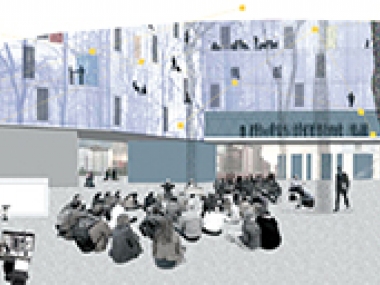USEAct Bilateral Meeting in LONDON | Real Estate investement trust for housing
Edited on
05 February 2015The 3rd and 4th April 2014 will be held in London (UK) the First USEAct Bilateral Meeting. Barakaldo, Buckinghamshire Business First, Nitra, Naples and Østfold will take part to the meeting. In many UseAct partner countries, developing affordable houses is perceived as a priority. In some cases, municipalities (see the Nitra case) are currently developing programs for affordable housing.

The first Bilateral/trilateral meeting of the UseAct project will focus on innovative tools and approaches to develop affordable Social Housing and in particular on the role that municipalities and local administrations can play to reach this target trough exploiting not only national or regional funding schemes but also the services provided on the market by other subjects.
In many countries, national funding schemes are in fact coupled to other innovative approaches and in some cases, the way to reach this target is under debate also at local level.
As pointed out for instance by the UK partner, which hosts the meeting, ambitious, commercially focused housing associations are moving into private sector management and building homes for market rent. Councils are outsourcing the running of their homes to private companies. Big housebuilders are competing against social housing organizations for a share of the government's £1bn "Build to Rent" pot, an initiative launched to stimulate new private rented housing supply and to provide opportunities for new institutional investment in the sector.
A range of other schemes, are possible too. "Affordable" rented homes, at higher than the usual social rents, shared ownership initiatives and "help to Buy mortgages for would-be homeowners are redefining what it means to be a tenant or owner occupier.
Among the most promising tools, a major role is played by the so called Real Estate Investment Trusts (REITS), that are under development in several countries. REITs are quoted companies that own and manages income-producing property, which provide a way for investors to access property assets without having to buy property directly.
These trusts allow to gather capitals from investors interested in not very high financial returns but low risk levels. As pointed out by the Spanish partner, however, developing social housing trough such a tools are not easy if market conditions are unfavorable and the “legal framework” poses some constraints. On planning conditions, it seems for example that in Spain is no possible and also unlikely to restrict the type of housing for a specific type of ownership (renting), because is less flexible and because the actual Spanish housing renting systems does not generate enough profits to cover the provable expenses. Moreover, inside PPP conception and according Spanish law regulations, there are serious doubts about the possibility of managing not owned properties for renting purposes, including public plots or buildings (either housing or retail).
This type of investment and intervention tools are also primarily focused in non fragmented properties or non divided properties (either housing, retail or offices), as long they are able to control and secure the investment, or decide about the improvements that will lead to a value and profits increase. It is all about risk limitation. In Spain, there many REIT examples on retail and offices, and also in the touristic complexes. But the common Spanish urban housing typology, together with the tenant still protective legal system in case of defaults, moves away the Spanish REITs from these niche markets.
Involving banks into local social housing development initiatives is a very important aspect of the issue as well. The Norwegian housing bank, for example, also give out starter-loans and housing allowances mostly administrated by the municipalities. They typically do not build anything themselves put part-finance public or private projects.
They have also done a couple of larger scale “area-lifts” where they work with the whole local community to improve a run-down area with severe social issues. Some municipalities in the Østfold Region have tried to get a project like this for their central east-end, but has not won through. What they want to do instead, and which the housing bank is thinking about, is getting involved in is a smaller scale renovation in one of the blocks, where they combine funds from the municipality, the Housing bank, and possibly private investors to make an example building with both social housing for disadvantaged groups combined with high quality apartments for the open market in order to upgrade the whole look of the neighborhood and show private developers that investing in this area might be worth the risk. This effort has to be combined with other community action in order for it to have the desired effect.
In conclusions, what are the concrete options, in the different countries, to exploit the newly emerging tools aimed at funding social housing schemes? What the conditions – in terms , for example, of owners involved, scale of intervention, legal/financial framework available, rent level, needed for successfull initiatives? What is the role that local administration can play to boost the process? These question will be faced and possible answered during the meeting, with support of professionals and experts operating in the real estate and financial sector.
V.T.
Submitted by admin on




